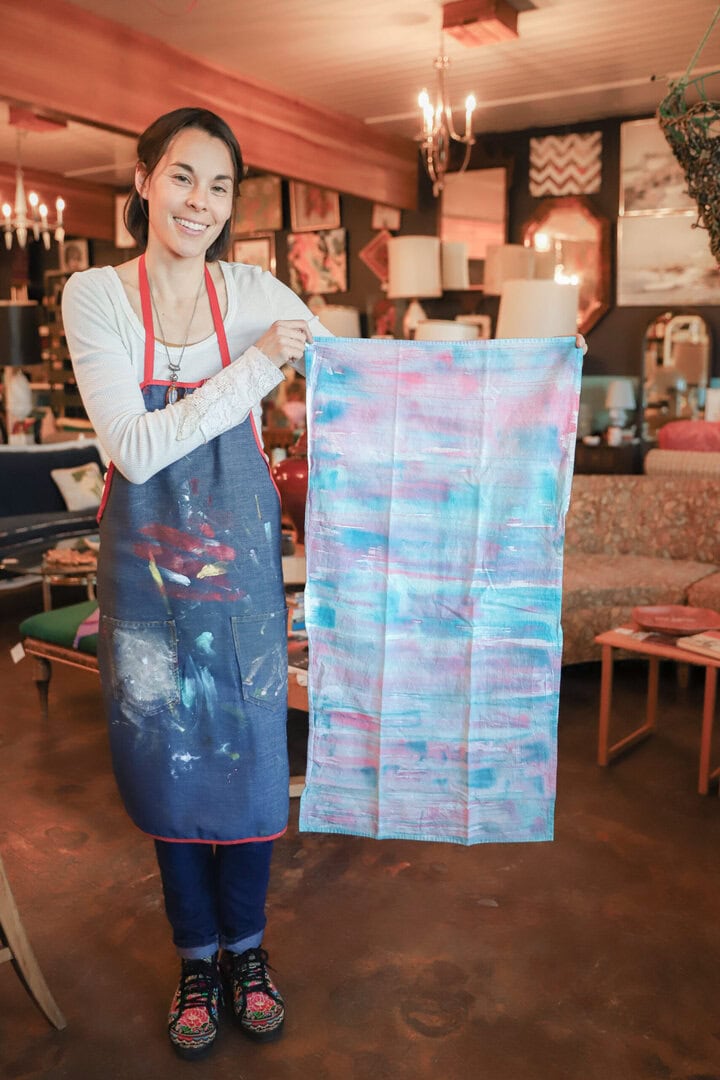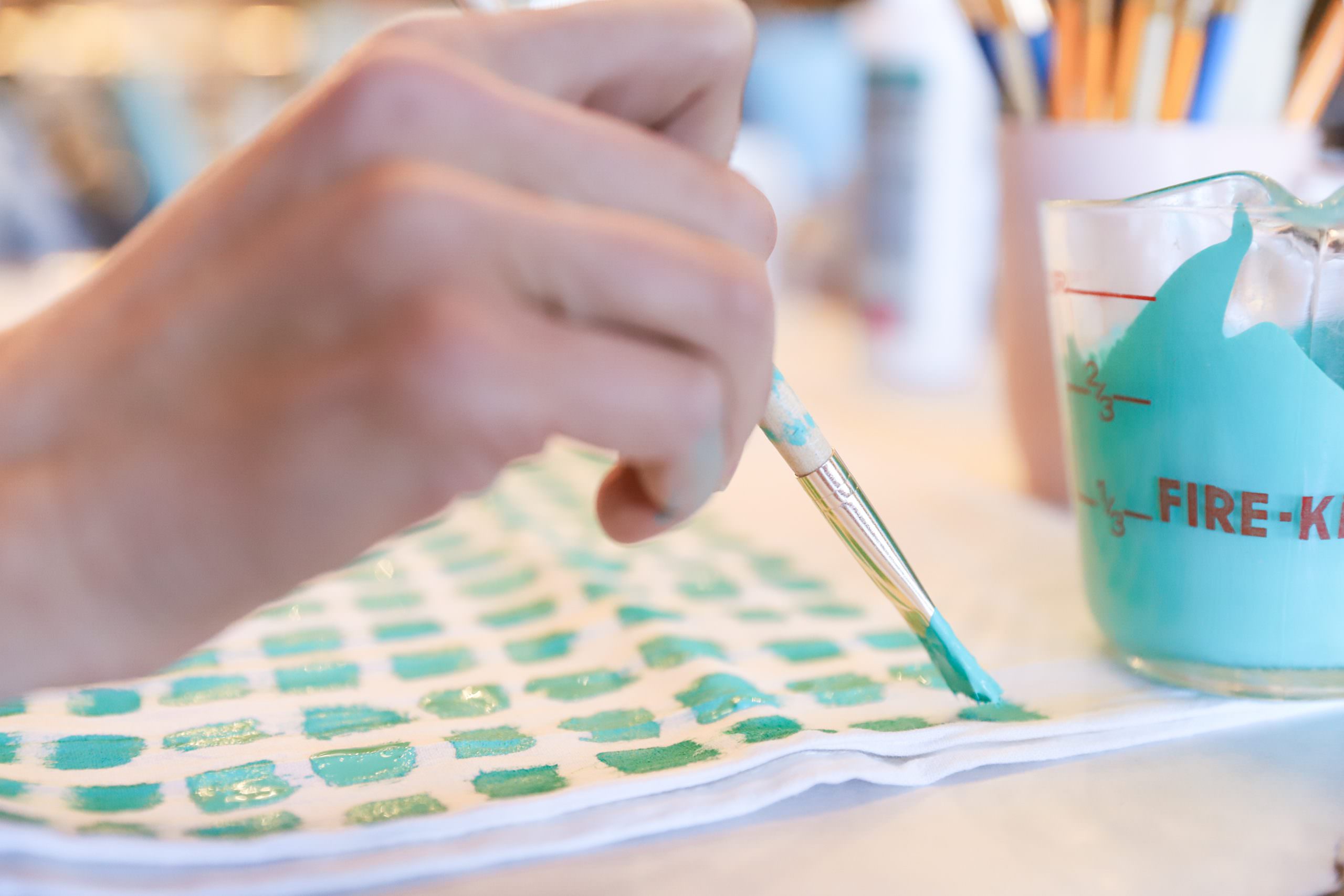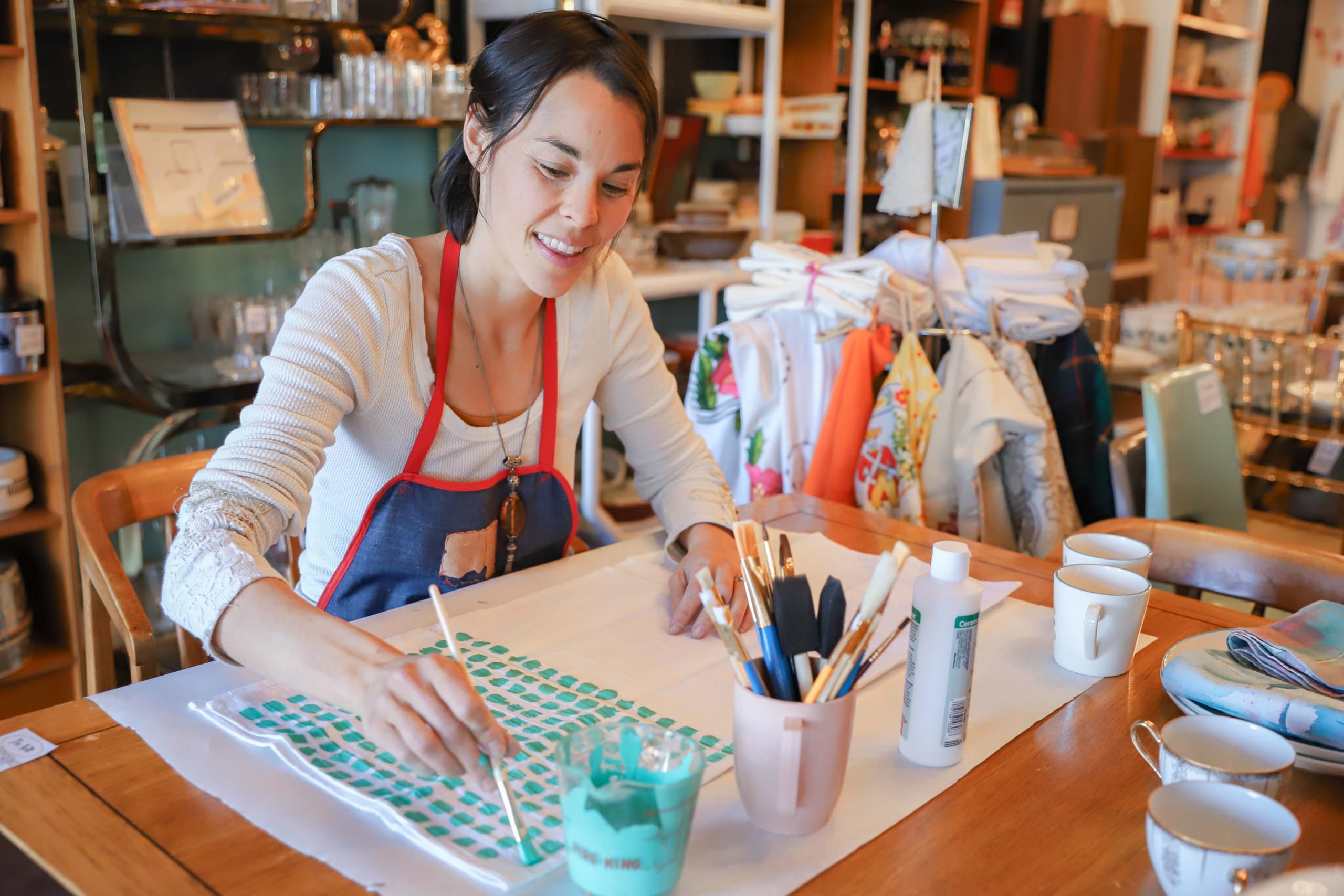Tea towels offer an easy surface for creativity and décor.
The humble tea towel may not be so humble at all.
“A cute tea towel can make your whole kitchen,” says Tessa Dee Miller, who owns The Nest in Reno, a vintage boutique that also has hosted tea-towel-painting classes. “It’s the equivalent of a pillow as a home décor accessory. They are a great, noncommittal way to dress up your kitchen.”
Tea towels are functional and beautiful, says Vivienne French, who teaches embroidery at Truckee Meadows Community College as well as local art studios. She first used tea towels for their standard use: drying dishes.
But as she and other sources point out, tea towels can be napkins or reusable, versatile towels, making them a green alternative to paper products.

Miller displays one of her painted tea towels
So why take the time to decorate an item that could easily get dirty? Tea towels offer a low-barrier entry to creativity.
“You can get super creative without being too attached,” Miller says. “It doesn’t have to be a masterpiece.”
A tea towel’s simple canvas can be an excellent way to learn to embroider or print fabric.
“My mom, who taught me to embroider, started with tea towels because it was a quicker item for a beginner,” French says. “It’s also something you can use and appreciate every day.”
As for the potential dirt and damage, tea towels can be washable and easy to clean.
For those that are too precious to risk staining, French has an alternative use: “I have some tea towels that I put aside and line my picnic basket with, rather than wipe dishes.”
Annie Flanzraich is a freelance writer and editor in Reno. She doesn’t own any tea towels, but now she thinks she should.
Tea towel tutorial

Miller paints a tea towel
Decorating tea towels can be a creative and rewarding experience. To make it easy and fun, follow these suggestions from our experts:
Buy quality fabrics and materials.
“A quality product’s a quality product,” French says. “Work with some quality materials from the get-go, and then you have a good, quality product that will last.”
Design with use in mind.
“I suggest using darker colors and not leaving much white space on it because ultimately it’s going to get dirty,” Miller says.
Go digital.
Companies such as Spoonflower.com allow users to upload designs and offer on-demand textile printing in a variety of sizes, says textile artist Casey Sibley, a former Reno artist who has taught tea-towel-painting classes at The Nest.
Use different tools.
“I paint on them with paintbrushes,” Sibley says. “I’ve made little handmade stamps out of little wood blocks and pieces of foam sheets.”
Make it washable.
French suggests using high-quality embroidery floss as it is less likely that its colors will run in the wash. For fabric painting, Sibley suggests shopping at Dharmatrading.com for fabric and using Jacquard paint. To set the paint, apply an iron without steam for a few minutes per section, Sibley says.
Get creative.
“Sometimes, we get too worried about what it’s going to look like,” Sibley says. “‘Is it going to be pretty? Are people going to like it?’ It’s important to stay tuned on the process and not so much the outcome.”
RESOURCES
Tea towel/textile classes
- Vivienne French will teach a tea towel embroidery class at the Copper Cat Studio in Sparks. For details, visit Coppercatstudio.com.
- The Nest will host a tea-towel-painting class at some point this year. For details, visit Thenestreno.com.
- The E.L. Cord Museum School at the Nevada Museum of Art offers classes in textile arts. For details, visit Nevadaart.org.


